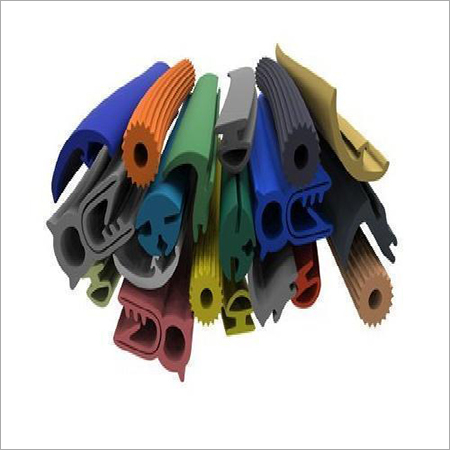Neoprene Rubber Profiles
Price 350 INR/ Kilograms
Neoprene Rubber Profiles Specification
- Product Type
- Neoprene Rubber Profiles
- Size
- 0.9 meter x 1.8 meter
- Thickness
- 3.0 mm TO 25.0 mm Millimeter (mm)
- Color
- Silver
- Usage
- Automobile
- Material
- Rubber
Neoprene Rubber Profiles Trade Information
- Minimum Order Quantity
- 100 Kilograms
- Delivery Time
- 7 Days
About Neoprene Rubber Profiles
Product Specification
| Material | Rubber |
| Product type | Rubber Profiles |
| Sizes | 0.9 meter x 1.8 meter |
| Temperature range | -45 degree C to 120 degree C |
| Thickness | 3.0 mm TO 25.0 mm |
| Colour | Silver |
Premium Automotive Protection
Engineered specifically for vehicles, these neoprene rubber profiles offer long-lasting protection against harsh environments and constant mechanical wear. The adaptable thickness and robust material minimize maintenance and extend component life, making them ideal for automotive sealing and insulation tasks.
Customizable Sizes for Versatile Applications
Each profile is available in a practical 0.9 meter by 1.8 meter size, accommodating various installation needs within different automobile models. The flexibility in thickness ensures compatibility with multiple design requirements, contributing to enhanced performance across different automotive systems.
FAQs of Neoprene Rubber Profiles:
Q: How are neoprene rubber profiles utilized in automotive applications?
A: Neoprene rubber profiles are commonly used in automobiles for sealing gaps, reducing vibration, providing insulation, and protecting components from moisture, dust, and chemicals. Their resilience ensures long-term effectiveness in demanding vehicle environments.Q: What is the manufacturing process for these rubber profiles?
A: These profiles are manufactured using high-quality neoprene rubber, which is then processed through extrusion or molding techniques. The profiles are precisely cut to the required sizes, ranging from 0.9 meter x 1.8 meter, and inspected for consistency in thickness and quality.Q: When should you choose a neoprene rubber profile with a thicker specification?
A: A thicker neoprene profile, closer to 25.0 mm, is ideal when greater insulation, enhanced sealing, or more robust vibration dampening is needed, especially in heavy-duty automotive applications or areas prone to more intense mechanical stress.Q: Where can these neoprene rubber profiles be installed in a vehicle?
A: They can be installed around doors, windows, hoods, trunk lids, and various chassis points to provide effective sealing, sound insulation, and weather protection, contributing to overall vehicle comfort and durability.Q: What are the benefits of using silver-colored neoprene rubber profiles?
A: Aside from aesthetic appeal, the silver color can complement specific automotive designs and may offer better visibility for installation inspections. The color does not compromise the profiles resilience or performance.Q: How do these profiles contribute to cost efficiency in automobile maintenance?
A: Their superior resistance to wear, chemicals, and environmental factors reduces the need for frequent replacements or repairs, ultimately lowering maintenance costs and minimizing vehicle downtime over the products lifespan.

Price:
- 50
- 100
- 200
- 250
- 500
- 1000+
More Products in Rubber Extruded Profiles Category
Rubber Extruded Profile
Price 95 INR / Kilograms
Minimum Order Quantity : 100 Kilograms
Product Type : Rubber Extruded Profile
Color : Red,Yellow,Blue and Green
Material : Other
Architectural Building Rubber Profiles
Price 250 INR / Kilograms
Minimum Order Quantity : 1 Kilograms
Product Type : Architectural Building Rubber Profiles
Color : Multicolor
Usage : Industrial
Silicone Rubber Extrusions
Price 350 INR / Meter
Minimum Order Quantity : 100
Product Type : Silicone Rubber Extrusions
Color : Multicolor
Usage : Industrial
Material : Other, Silicon
Container Rubber Profile
Price 200 INR / Kilograms
Minimum Order Quantity : 1 Kilograms
Product Type : Container Rubber Profile
Color : Black
Usage : Automobile


 Send Inquiry
Send Inquiry






 Send Inquiry
Send Inquiry Send SMS
Send SMS English
English Spanish
Spanish French
French German
German Italian
Italian Chinese (Simplified)
Chinese (Simplified) Japanese
Japanese Korean
Korean Arabic
Arabic Portuguese
Portuguese